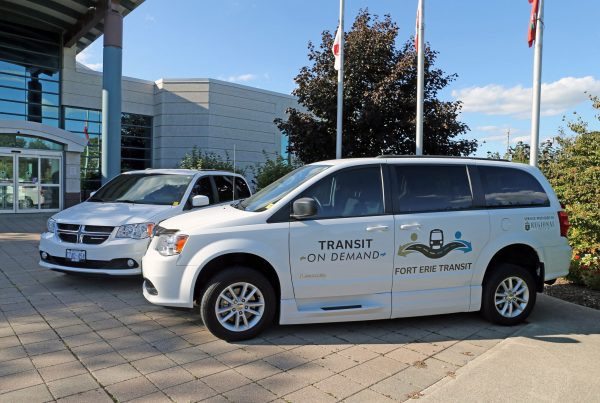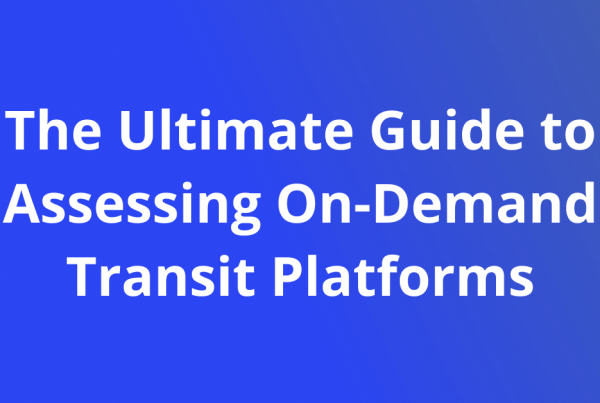Reinventing Public Transit Key to Tackling Climate Change
By: Gurjap Birring
There is a challenging future ahead for our planet; cities, economies, and the environment are all being impacted by climate change. Despite widespread acknowledgement of this problem and many nations investing in various carbon reduction projects to tackle it, the world’s greenhouse gas (GHG) emissions must come down drastically to make a serious dent. While much focus has gone to ideas like renewable energy or forest conservation, one area with a lot of untapped potential for emissions reductions is transportation.
In developed countries, transportation alone accounts for 30-50% of GHG emissions, largely from personal vehicle usage and resulting congestion. Usage rates for other modes of transport, whether public transit, biking, or walking, have remained relatively constant. While electric vehicles and lower-carbon fuels will help reduce transport emissions, its estimated that “20 percent of emission reductions needed to limit temperature rise need to come from trips avoided or trips shifted away from cars to trains, buses and bikes.” Single occupancy automobiles, the most inefficient use of road capacity, are far too common and make up the largest proportion of road pollution.
To cut GHG emissions, one strategy cities should strongly focus on is getting commuters to switch from driving cars to riding public transit, specifically as an alternative for commuters travelling long distances. Studies estimate that for each commuter that switches from driving a car to taking public transit, they could reduce their carbon dioxide (CO2) emissions by 4,800 pounds per year.
While the evidence suggests switching commuters over to public transit would greatly help in cutting back GHG emissions, actually curbing the popularity of cars and convincing riders to switch over to public transit is no easy task.
Why is Changing Habits So Hard?
To wean people away from vehicles, the first roadblock for cities is the built environment. Over the past half century, our cities, especially in North America, were designed for cars to be the default mode of transport.
Transforming urban planning and implementing transit-oriented development would help reduce reliance on vehicles, but it would take decades before the benefits are fully realized. Other ideas to reduce driving include congestion pricing, reducing parking spaces, and increased gasoline taxes. These ideas have been hotly debated over the past decade and in some places have resulted in public riots. Even in the places where they’ve passed, there was hardly resolute public consensus.
Finding politicians to champion these ideas, convincing the public of their merits, and ultimately passing legislation is a long and difficult process that still doesn’t guarantee eventual implementation. To make an immediate impact on travel patterns, instead of making driving less attractive, cities should make the alternative, commuting by public transit, more attractive.
Offering Better Transit Is The Best Route
To get people to ditch their cars and switch to public transit, service needs to be convenient, fast, and reliable. In larger cities, high frequency lines like subways or commuter rail achieve this, but are often only suitable for dense areas and have little coverage in more sparsely populated neighbourhoods.
In less populated areas, buses are often the only available transit service. Although some fixed routes may be productive, many with limited ridership are inefficient, burning fuel while running largely empty. Such routes often offer infrequent service with low coverage, are an inconvenient travel option, and result in areas underserved by transit. Improved service might boost ridership, but adding additional buses and increasing frequency is not financially feasible for many transit agencies.
If adding new buses or service isn’t affordable, how can agencies increase ridership, get commuters to swap their cars for public transit, and ultimately reduce transportation related emissions? The answer is in offering on-demand macrotransit.
Macrotransit Offers Immediate Impact
Macrotransit is a form of on-demand transit that uses full size buses and applies autonomous routing using fleet optimization technology. This technology enables fleets to achieve high efficiency while improving service levels to offer a convenient travel experience far superior to low frequency bus routes.
While this improved service could pull commuters from personal vehicles to buses and reduce overall GHG emissions, it comes with the added benefit of lowering emissions of the bus fleet too. Since the bus routing is determined by current demand and is autonomously optimized in real-time for efficiency, buses travel a lot fewer miles overall as compared to the fixed routes they replaced.
Belleville, Ontario incorporated macrotransit for the evening service in 2018 and were able to reduce buses in operation from thirteen to five, while increasing ridership 300% and decreasing fleet mileage by 30%. An analysis of this project’s GHG emissions found that the decrease in car travel and fleet mileage resulted in CO2 emissions being cut by 0.044 Kilotons.
On its own, deploying this technology in hundreds of cities could make a significant impact on cutting transportation emissions. However, the more important role macrotransit can play is in re-imagining public transit altogether. To shift cities away from cars and congestion, we need to reinvent transportation systems to center around convenient and efficient public transit.
In the long run, to slow down climate change, public transportation will have to undergo a tremendous transformation. Macrotransit can be the first step to get it started.




